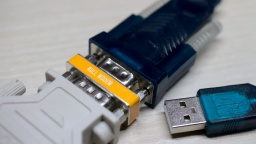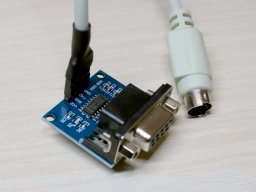 The Retro Chip Tester (short: RCT) by Stephan Slabihoud is a chip tester that can test an incredible amount of RAMs, logic chips and other retro components. The good thing is that it is also affordable and fun to assemble.
The Retro Chip Tester (short: RCT) by Stephan Slabihoud is a chip tester that can test an incredible amount of RAMs, logic chips and other retro components. The good thing is that it is also affordable and fun to assemble.
After I skipped three updates, I thought that a firmware upgrade to the current v0.26 was now overdue. This article is rather meant to be a guide for myself, but maybe you will find it useful as well. It is only about a firmware update though. For an initial setup, you will first have to set the fuses of the ATmega, which is not part of this article.
To perform this update, I used a Fedora Linux with avrdude installed, and a Microchip PICkit 4 (just because I have one at hand). Other programmers will do as well (see the RCT documentation), maybe it's even possible to use a Raspberry Pi for it.
First I connected the PICkit to the ISP connector of the RCT:
| Signal | PICkit | RCT | |
|---|---|---|---|
| (NC) | ⯈ 1 | ||
| VTG | 2 | ➞ | 2 |
| GND | 3 | ➞ | 6 |
| MISO | 4 | ➞ | 1 |
| SCK | 5 | ➞ | 3 |
| /RESET | 6 | ➞ | 5 |
| MOSI | 7 | ➞ | 4 |
| (NC) | 8 |
Please check twice that everything is connected properly, otherwise you can damage your hardware. Also remove an SD-Card reader module (if present), as it will block the ISP port.
According to the documentation, the RCT must not be powered by an external power source and the programmer simultaneously. The VTG line does not provide power though, but is used as a target voltage input by the PICkit. It is still necessary to power the RCT externally (e.g. by USB or by a barrel plug).
I then downloaded the firmware and unpacked the zip file. Now all there was left to do is to change into the directory where the archive was unpacked, and run avrdude:
avrdude -Cavrdude.conf -v -patmega2560 -cpickit4_isp -Pusb -xmode=avr \
-Uflash:w:Chip-TesterPro-FW-v0.26.hex:i
(Remember to amend the bottom line to match your firmware version.) If the following error should appear, just run the command again:
avrdude jtag3_open_common() error: PICkit 4 in PIC mode detected
switching to AVR mode
please run Avrdude again to continue the session
If the flashing process should fail, you can always fix the problem and do another flash attempt.

